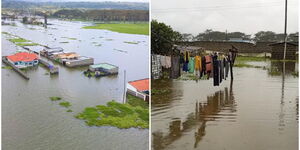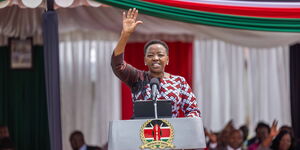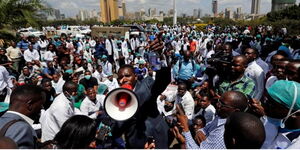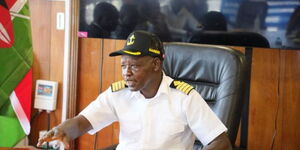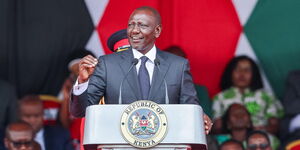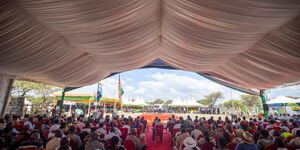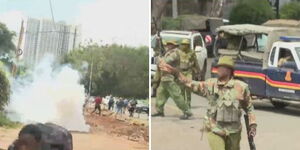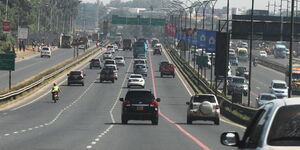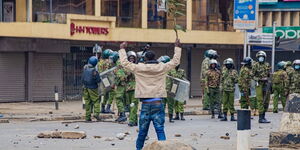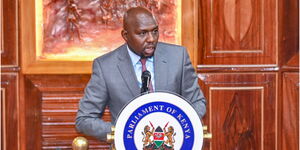In the present age, institutions of higher learning dot the republic like crocodiles in the Tana River. Some universities have their campuses within spitting distance of each other. It has opened up the sector, spawned degree programs and monetised it all. That hasn't always been the case.
Early 80's, The University of Nairobi (UoN) was the republic's only public university, with only one constituent college, currently Kenyatta University (KU).
This provided a perfect backdrop for the era's politics and student activism/ Lots of present-day politicians cut their teeth in the 80's campus politics.
In May 1982, student chaos erupted at UoN - just three months to the infamous attempted coup. The schools closed.
A fortnight later, the Education Ministry issued a condition to students seeking to resume their studies. They had to inform the government of “students and lecturers” who took part in the riots. No re-admission, unless a student gave out information implicating the perpetrators.
Well, desperate students had to cook up stories - and ended up implicating innocent people - fellow students and lecturers.
Maina Kinyatti hailed from Murang'a, and joined KU in early 1975, as a history lecturer. He was a postgraduate alumnus of Michigan State University, USA.
He'd fall victim to this catastrophe.
On 3rd June 1982, plain-clothes policemen raided his Nairobi home wishing to arrest him.
Well, two days to his arrest - President Moi had in his Madaraka Day address issued an unclear warning:
“I want to make it clear that we shall not allow a few individuals who regard themselves as revolutionaries promoting foreign ideologies to disrupt our education and training programs…”,
Kinyatti wasn't home at the police officer's arrival time but found his wife, Mumbi Kinyatti. She was a US citizen. As it is, she demanded to be shown a search warrant but the Officer-In-Charge told her: “....we can enter anyone’s home any time, day or night without the need for a warrant….”
The officers made a major ransack of the house, carted away from some personal effects, including a typewriter and dozens of books and files.
Mumbi remained present throughout the search, and the officers acceded to her request for an itemised list of all the items they intended to take away.
Kinyatti later arrived to a chaotic house and chose to visit the CID HQs. He was accompanied by his wife and a lawyer. The lecturer was arrested on the spot - his lawyer and wife ordered to leave.
The next four days, the scholar underwent state interrogation - a flowery term for severe torture. He was starved for that entirety.
On 7th June, he was transferred to the Nairobi Remand Prison. On the same day, he was arraigned before a Nairobi Magistrate, and charged with being in possession of a seditious leaflet.
The leaflet in question was entitled Moi’s Divisive Tactics Exposed (1980), and, interestingly, not on the list of documents that police officers took from Maina’s home.
During the trial, the lecturer's lawyer - S.M. Otieno - inquired why the alleged incriminating document was not on the list of items confiscated, a policeman testifying for the prosecution described the omission as an “oversight”.
It was a twisted time, and the Nairobi Chief Magistrate, Abdul Rauf on 19th October 1982 (two months after the coup attempt) sentenced Maina to six years imprisonment, under Section 57(2), Chapter VII of the Penal Code of the Laws of Kenya.
The magistrate conveniently made no mention of the oversight by the prosecution.
The arrest of various professionals and many members of the academia like Kinyatti coincided with the first crackdown of President Moi’s presidency against individuals deemed to be opposed to his administration.
In those years, the Judiciary to a large extent served the whims of the Presidency or, if you like, the Executive. Consider that in this case, there was neither a search nor an arrest warrant.
Also, neither Kinyatti nor his lawyer were shown a copy of the leaflet that the accused was alleged to have been found in possession of. Moreover, the leaflet was neither named in the charge sheet nor read out in court.
Kinyatti endured torture - physical and psychological. At the Nairobi Remand Prison, he was held at the maximum-security section reserved for clinically insane inmates. In spite of the offense being bailable, he was repeatedly denied bail.
While awaiting trial, he suffered gastric ulcers and dental caries. He also contracted pterygium, an eye disease that can lead to irreversible blindness.
Only his wife was allowed to make visits, which took place “once a month for five minutes” as the New York Times reported on 26th April 1987. And even so, she was allowed to speak to him through a small wire cage.
The scholar appealed against his convictions at both the High Court and Court of Appeal. In both cases, the two courts upheld his sentence in May and November 1983 respectively.
He served his full sentence and was released in October 1988. Fearing re-arrest, he fled to Tanzania, from where he sought political asylum in the United States.
Some of the books that the lecturer has authored include Mau Mau: A Revolution Betrayed, Kenya: A Prison Diary and Kenya’s Freedom Struggle: The Dedan Kimathi Papers.

